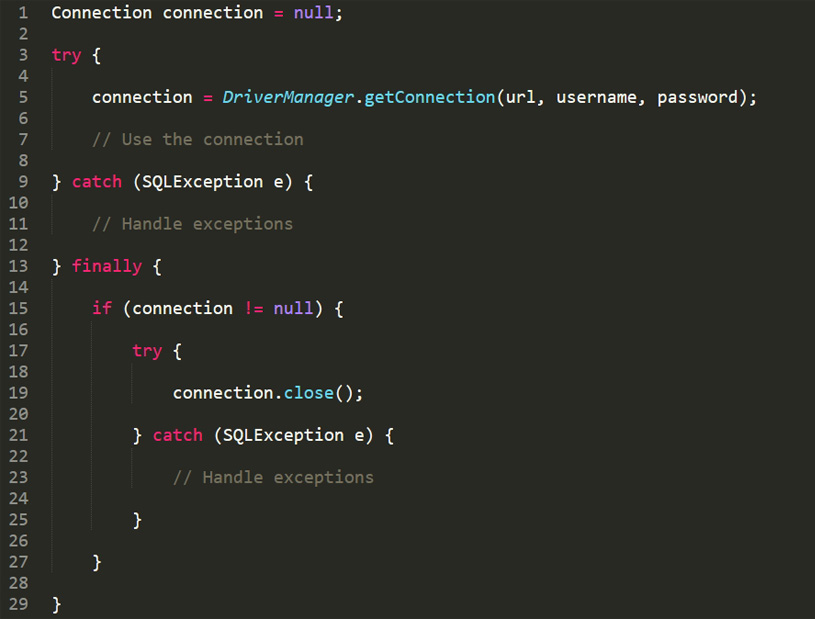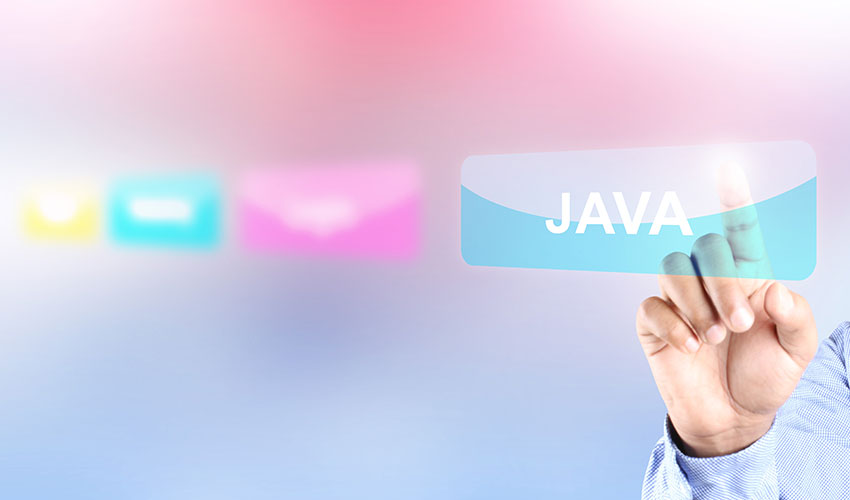Subscribe
Subscribe to EduBridge Blogs
The role of a Java full-stack developer has become paramount in today’s tech-driven era, where companies strive to deliver exceptional user experiences through seamless integration of front-end and back-end technologies. Java developers, with their unparalleled mastery of Java programming language, possess the power to bring innovative web architectures to life, construct powerful server-side applications, and design efficient databases.
As the demand for Java full-stack developers skyrockets, leading technology giants are actively seeking these multi-talented individuals to contribute to their groundbreaking projects. Prepare yourself for the interview of a lifetime and unlock the door to your dream job with our meticulously crafted interview questions for Java full-stack developers:
Here are Java full-stack developer interview questions for freshers:

1. How will you develop a project from scratch? What technologies and languages would you need? OR What skills a Java full-stack developer should have?
Ans: This is one of the most frequent interview questions for Java full-stack developers. A Java full-stack developer must know:
- Programming Languages: Java full-stack developers should be proficient in more than just one programming language. However, Java is a must along with Python, PHP, Ruby, C++, etc.
- Front End technologies: Should be familiar with front-end technologies like HTML5, CSS3, JavaScript, etc. Knowledge and understanding of libraries like Angular, ReactJS, etc. are important.
- Databases and Caches: Knowledge about Database Management Systems like MongoDB, Oracle, MYSQL, etc. and caching mechanisms like Redis, Memcached, and Varnish.
- Design Ability: Having a good understanding of UI/UX design and principles of prototyping is important if you want to become more successful as Java full-stack web developer.
- Server: Apache or NGINX experience would be beneficial. Additionally, knowledge of Linux is added advantage.
2. Which language is the most preferred by Java Full Stack Developers?
Ans: Java is the first and foremost language which is preferred. Along with Java, the developer should be proficient in other popular programming languages like Python, Ruby, PHP, C++, etc.
3. What is Pair Programming? One biggest disadvantage?
Ans: It is a fundamental aspect of programming in agile software development techniques. It is where two developers work together in the same machine system. The developer who writes the code is known as the driver and the developer who checks the code is called the navigator. This technique is more efficient such that the mistakes are reduced.
One of the disadvantages is higher development costs. This is because two resources are working on one single task at the same time.
4. What do you mean by CORS and how does it work?
Ans: Full-stack Java developer interview questions compromise a plethora of questions however, this is one of the most frequently asked questions.
CORS is Cross-Origin Resource Sharing. It is a W3C standard and HTTP header mechanism which allows a server to indicate origins like domain, port, etc. from the requested one.
In simple terms, the way to ensure that the request made by one website to another website is safe and secure. It prevents the leakage of user data from the respected websites.
When a browser sends a request to a different domain, it sends an origin header with the request. The server checks the “origin” header to determine whether or not to allow the requests. If the server allows the request, it sends an “Access-Control-Allow-Origin” header back to the browser to know that the request was successful.
This is known as a “preflight” request and it happens in the servers whenever a webpage attempts to make a cross-origin request.
CORS can be implemented on the server side by setting response headers, which allow specific domains to make requests or allow all domains to make requests. It is an important security measure that helps to protect user data and ensure that websites are safe and trustworthy.
5. What is a Callback Hell?
Ans: Callback Hell is asynchronous programming code i.e. multiple functions running simultaneously. The term describes a large number of nested “if” statements or functions. In simple terms, Callback Hell is where you need to apply multiple asynchronous functions. Callback functions are nested in many layers since the functions depend on one another. Hence can get quite chaotic.
The callback function leaves you with code which is difficult to read, maintain and look making it more difficult to identify the flow of the application – the main obstacle to debugging. This is called Callback Hell.
6. Explain Long Polling
Ans: Long polling is a web development technique where the server maintains a connection with the client until new data is available. It is used for real-time applications, allowing instant updates without the need for constant client requests. e.g. chat applications, stocks or multiplayer games.
7. How to enhance a website’s scalability and efficiency?
Ans: We can use some of the following ways to optimize the efficiency of a website:
- Reducing DNS lookup
- Optimising Code
- Use Content Delivery Network (CDN), cloud hosting, load balancing, asynchronous loading, etc.
- Avoid URL redirects as much as possible
- Avoid duplicating codes and unnecessary images
- Leverage browser caching
- Avoid inline JavaScript and CSS
8. Comparison between Java and Python
Ans: Being a full-stack Java developer knowing about the programming languages is a must. While both are one of popular programming languages, this question stands to be one of the most loved Java full-stack developer interview questions for freshers by the interviewers.
Here’s the difference between Java and Python:
| Pointers | Java | Python |
| Code | Java has longer code lines | Fewer lines of code are generally used in Python |
| Working Speed | Java is faster in speed as compared to Python | It uses an interpreter hence its slower and also determines the data type at run time |
| Data Types | Static | Dynamic |
| Inheritance | Partially supports multiple inheritances through interfaces | Supports multiple inheritance |
| Framework | Java has a large number of Frameworks. The popular Frameworks are Spring, Hibernate, etc. | Compared to Java, Python has a lower number of Frameworks. The popular ones are Django and Flask |
| Syntax | The syntax is complex. Errors can be found if you miss semicolons or curly brackets. | The syntax is easy to remember. It is similar to human language. |
| Databases | Java Database Connectivity (JDBC) is widely used to connect with databases. | Python’s database access layers are weaker as compared to Java/ JDBC. Hence, it is rarely used in enterprises. |
| Machine Learning Libraries | Weka, Mallet, Deeplearning4j, MOA | Tensorflow, Pytorch |
| Key Features | Self-memory management, Robust, Platform independent | Less line no. of code, rapid deployment and dynamic typing |
9. Major Java Features
Ans: The major features of Java as one of the most popular programming languages and interview questions for Java full-stack developers are below:
- Object-oriented: Java is an object-oriented programming language where classes and methods describe the state and behaviour of an object.
- Portable: Java programs can be converted into Java bytecodes which can be executed on any platform without any dependencies.
- Independent platform: Java goes with the principle of ‘write once, run anywhere’ as it is supported on multiple platforms like Linux, Windows, Mac, etc.
- Robust: JRobust: Memory leaks in Java are prohibited due to strong memory management and automatic garbage collection.
- Interpreted: Java compiler converts the codes into Java bytecodes which are then interpreted and executed by the Java Interpreter.

10. Describe the class in Java
Ans: This is one of the most asked full-stack Java developer interview questions. Class in Java is a blueprint for creating objects that have similar attributes and behaviours. It is a basic concept in object-oriented programming and is used to summarize data and behaviour into a single unit.
A class contains variables, methods and constructors that define its properties and behaviour. The variables in a class represent the state or data of the object, while the methods define the actions that can be performed on the object.
e.g. Car- assume this is a class. Variables can be “make”, “model”, “year”, “colour”, etc. It can also have methods such as “startEngine()”, “stopEngine()”, “accelerate()”, etc.
11. What is CI (Continuous Integration)? What are continuous integration and continuous delivery (CI/CD)?
Ans: This is one of the most popular questions in the Java full-stack developer interview questions for freshers. CI is an abbreviation for Continuous integration. It is a software development practice in which frequent and isolated changes are immediately tested, reported, and added to a large codebase. This helps the developer to identify issues at the earlier stage of development, makes it easier to fix bugs and curtails problems at the merge for the release.
The CD is an abbreviation for Continuous delivery. The ability to get changes like features, configuration changes, fixing bugs and experiments- into the hands of users, safely and quickly in a sustainable way is a part of Continuous Delivery.
12. Is there a way to decrease the load time of a web application?
Ans: Here are some of how the load time of a web application can be decreased
- Image size and format optimization
- Caching of the web pages and browser
- Avoiding unnecessary plugins
- Reduction in HTTP requests
- Cookie size to be reduced
- Compressing the JavaScript and CSS codes
- Enable G-Zip encoding
- Avoidance of Inline JS and CSS files
- Leverage Content Delivery Network (CDN)
13. What is Promise and explain its states?
Ans: Promise in Java is not a built-in language, but refers to a programming concept related to asynchronous programming and concurrency. It is a representation of a value that may not be available yet but will be resolved in future. It’s a way to write code that can be later executed asynchronously and then wait for the result.
Promise just like any other state the same in Java
- Pending- Neither rejected nor fulfilled
- Fulfilled- Promise action is fulfilled successfully
- Rejected: Promise action is failed to be completed
- Settled: Either the action is fulfilled or rejected
14. Difference between GET and POST
Ans:
| GET | POST |
| In a GET request only a limited amount of data can be sent because data is sent in the header. | In POST request a large amount of data can be sent because data is sent in the body. |
| In a GET request, data is exposed in the URL browser and is not secured. | In POST requests, data is not exposed in the URL bar and hence it is secured. |
| The GET request can be bookmarked | The POST request cannot be bookmarked |
| In GET the second request will be ignored until a response to the first request is delivered. GET request is idempotent. | POST requests are non-idempotent |
| GET request is more efficient and is used more than POST | The POST request is less efficient and is used less than GET |
15. In Java, what is a connection leak? How can you fix this?
Ans: When a connection is acquired without being closed, a connection leak happens. The ‘leak’ is because each time it happens, one less connection is available for re-use.
Preventing connection leaks is important during testing for occurring in a production environment.
Connection Leak in Java happens while using Connection Pool. If there is an area of code which is not connected properly, every time that area code is executed, a connection will “leak” from the pool. Once all the available connections will be leaked, the application will hang.
To fix connection leaks:
-
-
- The initial step is to identify where the connection leaks are occurring. This can be done through code inspection or by using profiling tools to analyze the application’s behaviour.
- Once the potential sources of connection leaks are identified, inspect the code to find any connections that are not properly closed. Look for instances where connection objects are created but not explicitly closed or returned to a connection pool.
- Mostly the approach to ensure connections are closed is to use the try-with-resources statement introduced in Java 7. This statement automatically closes resources when they are no longer needed.For example:

By using the try-with-resources statement, you don’t need to explicitly call the close() method on the connection object. It will be automatically closed at the end of the try block. - If working with older versions of Java that do not support try-with-resources, or if you have custom connection management code, make sure to explicitly close the connections in a final block.For example:

- Review your code to ensure that connections are used and released appropriately. Avoid keeping connections open for longer than necessary and consider using connection pooling to manage and reuse connections efficiently.
- After making the necessary changes, thoroughly test your application to ensure that connection leaks have been resolved. Additionally, consider implementing monitoring mechanisms to detect and handle connection leaks in production environments.
-
By following these steps, connection leaks in your Java application can be addressed and ensure that resources are properly released, preventing potential issues such as resource exhaustion or decreased performance.
16. What is a deadlock in Java?
Ans: A programming situation where two or more threads are blocked forever is known as a deadlock in Java. This situation arises with at least two threads or two or more resources.
17. How to avoid deadlock in Java?
Ans: Avoiding deadlock in Java is one of the most important interview questions in Java full-stack development.
- Avoid nested locks- Do not give locks to multiple threads if one of the threads is already locked.
- Avoid unnecessary locks: It is recommended to lock the necessary members since it can result in a deadlock in Java.
- Using Thread Join (): If one thread is waiting to complete., a deadlock problem develops. If the situation exists, we can utilise Thread. join() and the max. execution time.
18. What is RESTful API?
Ans: REST, an acronym for Representational State Transfer which refers to an architectural style widely employed in the development of web services. It relies on the use of HTTP requests to interact with and manipulate data. REST facilitates operations such as creating, updating, reading, and deleting data.
In website an API (Application Programming Interface) refers to a set of code that enables communication between different software programs. It allows developers to write code that requests services from an operating system or other applications, facilitating seamless interaction and data exchange.
19. Explain the difference between the inner class and the subclass.
Ans: An inner class is a class defined within another class in Java. It is tightly coupled with the enclosing class and can access its members, including private ones. Inner classes are used for better organization and encapsulation of related code.
On the other hand, a subclass is a class that inherits properties and behaviours from a superclass. It extends the functionality of the superclass by adding new methods or overriding existing ones. Subclasses can access protected and public members of the superclass, but not private ones unless provided with public or protected getter/setter methods. Subclassing facilitates code reuse and supports polymorphism in object-oriented programming.
20. Java doesn’t support multiple Inheritance. Why?
Ans: To maintain a simpler and more manageable class hierarchy, Java does not support multiple inheritances to avoid ambiguity and complexity which arises from inheriting multiple classes.
21. What is the difference between Java and C++?
Ans: This is another prominent asked during Java full stack developer interview questions for freshers
| Features | Java | C++ |
| Founded by | Developed by James Gosling at Sun Microsystems. It is currently owned by Oracle. | Developed Stroustrup at Bell Labs in 1979. It is an extension of the C language. |
| Programming Model | It supports only object-oriented programming models | It has the support of procedural programming and object-oriented programming. |
| Memory Management | Memory management in Java is system controlled. | Memory management in C++ is manual |
| Threading | Built-in support for multithreading | Requires manual support for threads |
| Compilation and Interpretation | It can be both compiled and interpreted. | It is only compiled and cannot be interpreted. |
| Features supported | It does not support features like operator overloading, Goto statements, structures, pointers, unions, etc. | It does support features like operator overloading, Goto statements, structures, pointers, unions, etc. |
| Hardware Interaction | Emphasizes simplicity and readability | Provides more flexibility and allows closer hardware interaction. |
| Type semantics | In Java, semantics differs from primitive and object types | C++ is consistent between primitive and object types |
Here are Java full stack developer interview questions for experienced:

1. Can you tell me what are the latest trends in Full Stack Development? Also, how do you keep yourself updated about the new trends in the industry?
Ans:
Some of the latest trends in Full Stack Development include:
- Serverless Architecture: Utilizing cloud platforms for backend services without managing servers.
- Microservices: Breaking down applications into small, independent services for scalability and agility.
- Progressive Web Applications (PWAs): Building web applications that offer native-like experiences with offline capabilities.
- Containerization: Using technologies like Docker for efficient deployment and management of applications.
- AI and Machine Learning Integration: Incorporating artificial intelligence and machine learning capabilities into full-stack development.
Some of the ways you can stay updated with industry trends are by:
- Reading blogs, publications, and articles about full stack development
- Subscribing to newsletters and mailing lists from the top organizations
- Signing in for webinars/masterclasses and online courses like Advanced Certification Program in Java Full Stack Development (with 110% Job Guarantee) from EduBridge.
- Engaging with the developer community through social media platforms, forums and online communities. Follow developers (influential) and thought leaders on social media platforms.
- Experimenting with new technologies and frameworks by building projects and staying hands-on
- Attending conferences and networking events to connect with professionals in the field.
2. State difference between GraphQL and REST (Representational State Transfer)
Ans: Java full stack developer interview questions for experienced stand incomplete if the interviewer does not ask this question. It is one of the most favourite questions asked by the interviewer.
| Features | GraphQL | REST |
| What is it? | GraphQL is developed by Facebook. It is an application layer server-side technology which is used for executing queries with existing data. | It is a software architectural style. REST defines a set of constraints for creating Web services. |
| Type of architecture | Client-driven architecture | Server-driven architecture |
| Community | It has a growing community | It has a large community |
| Development speed | Fast | Slow |
| Learning difficulty | GraphQL is fast to learn | REST is difficult to learn |
| Consistency level | Across all operating system, GraphQL provides consistency and high-quality UX | Across all operating systems achieving consistency is difficult |
| Use | Metadata for query validation | Does not have machine-readable metadata cacheable. |
3. What is ‘use strict’ in Java?
Ans: A statement which is used to enable strict mode to scripts or individual functions is known as “use strict”. It is a way to opt into a restricted variant of JavaScript.
4. What are the advantages and drawbacks of using “use strict”?
Ans: While preparing for full-stack Java developer interview questions do not forget this one.
Advantages of using “use strict” are:
- Impossible to create global variables by mistake
- Unique function parameter name is mandatory
- Stops the functioning of features which creates confusion
- Catching some common coding bloopers, throwing exceptions
Disadvantages of using “use strict” are:
- Many features that the developers might be using are absent.
- No access to function. caller and function.arguments
- Issues may arise since the concatenation of scripts written is in different strict modes
5. What is the SOLID principle in Java?
Ans: The SOLID principles are a set of design principles in object-oriented programming that aim to promote the maintainability, flexibility, and reusability of code.
SOLID stands for:
- Single Responsibility Principle (SRP): Only one reason is required for a class to change.
- Open-Closed Principle (OCP): Software entities like classes, modules, functions, etc. Extension can be open but modification needs to be closed.
- Liskov Substitution Principle (LSP): Objects of a superclass should be replaceable with objects of its subclasses without affecting the correctness of the program.
- Interface Segregation Principle (ISP): Avoid compelling clients to rely on interfaces they don’t utilize.
- Dependency Inversion Principle (DIP): Promote a design where higher-level and lower-level modules depend on abstractions.
6. What is a critical section?
Ans: In Java, a critical section is a specific part of the code where shared resources are accessed or modified. It needs to be executed by only one thread at a time to avoid conflicts and maintain data integrity. To achieve this, synchronization techniques like synchronized blocks or locks are used to ensure that only one thread can enter the critical section while blocking others. This ensures that shared data is accessed safely, preventing issues like data corruption or incorrect results due to concurrent modifications by multiple threads.
7. Mention the difference between Iterator and Enumeration.
Ans:
| Features | Iterator | Enumeration |
| Purpose | While traversing elements in the collection we can read and remove element. | While traversing elements in the collection we can only read the element. |
| Usage | Can be used with any class of the collection framework. | Can be used only with legacy class of the collection framework such as a Vector and HashTable |
| Developed | Java 1.2 (JDK 1.2) | Java 1.0 (older version) |
| Fail – Fast and Safe | Any changes in the collection like removing element from the collection during a thread is iterating collection then it throw concurrent modification exception. | Enumeration is fail-safe in nature. It doesn’t throw concurrent modification exception. Enumeration is fail safe in nature. |
| Limitations | Iterating is possible only with forward direction. | Remove operations can not be performed using Enumeration |
| Example | It has the following methods: *hasNext() *next() *remove() |
It has the following methods: *hasMoreElements() *nextElement() |
8. What is multithreading?
Ans: In Java, multithreading refers to the ability of a program to perform multiple tasks concurrently, where each task falls under a separate thread. It allows developers to handle multiple tasks simultaneously e.g. handling user interfaces, performing background operations and optimizing resource utilization in applications.
9. Difference between ArrayList and Vector in Java
Ans:
| Features | ArrayList | Vector |
| Synchronized | It is not synchronized | It is synchronized |
| Legacy | It is not a legacy class. It was introduced in JDK 1.2. | It is a legacy class |
| Speed | Since it is not synchronized, ArrayList is fast. | Since it is synchronized, Vector is slow. i.e. in a multithreading environment, it holds the other threads in runnable or non-runnable state until current thread releases the lock of the object. |
| Interface | ArrayList uses Iterator interface to traverse the elements | Vector either of the both Iterator or Enumeration interface to traverse the elements |
| Deprecated methods | No deprecated methods | Some methods are deprecated due to being replaced by equivalent methods from the List interface. |
| Fail-fast Behavior | Throws Concurrent Modification Exceptions if the underlying collection is structurally modified during iteration. | Throws Concurrent Modification Exception if the underlying collection is structurally modified during iteration. |
10. What is Docker? What are some of the uses of Docker?
Ans: Docker is a tool that wraps Java applications and their dependencies into portable containers. These containers can be easily deployed on different systems, ensuring consistency is maintained and creating reliability in executing of Java applications regardless of the underlying environment.
Some of the uses of Docker are:
- It provides a consistent development environment for Java applications.
- Ensures that Java applications can be shared and deployed consistently across different systems.
- Docker containers facilitate controlled testing and debugging of Java application components.
- It simplifies the deployment and scaling of Java applications across various environments.
- Docker is commonly used in CI/CD pipelines for automated building, testing and deployment of Java code.
- It supports the implementation of microservices-based architecture in Java, making services more manageable and deployable.
This is one of the questions you must prepare while you are preparing for Java full stack developer interview questions for experienced.
11. What is the difference between a constructor and a destructor in Java
Ans:
| Features | Constructor | Destructor |
| Memory | It helps to allocate memory to an object. | It helps to deallocate the memory of an object. |
| Arguments | Arguments are taken by constructors | Arguments are not taken by destructors |
| Signature | Same name as the class, no return type | Not application in Java (no explicit destructor declaration) |
| Execution | Invoked during object creation or initialization | Not directly supported in Java, handled by the garbage collector. |
| Multiple definitions | Multiple constructors can be defined with different parameters (method overloading) | Not applicable in Java (no explicit destructor definition) |
| Resource cleanup | Not typically used for resource cleanup; separate methods are used for the purpose. | Resource cleanup is not directly supported in Java, the garabe collector handles memory deallocation. |
12. Distinguish between StringBuffer and StringBuilder in Java programming.
Ans:
| Features | StringBuffer | StringBuilder |
| Meaning | StringBuffer is synchronized i.e. thread safe. It means two threads can’t call the methods of StringBuffer simultaneously. | StringBuilder is non-synchronized i.e. not thread safe. It means two threads can call the methods of StringBuilder simultaneously. |
| Efficiency | StringBuffer is less efficient than StringBuilder. | StringBuilder is more efficient than StringBuffer. |
| Introduced in | Java 1.0 (older version) | Java 1.5 (JDK 5) |
| Usage | Suitable for multi-threaded environments or when thread safety is required. | Suitable for single-threaded environments or when thread safety is not a concern. |
| Immutable Alternative | No immutable alternative is provided in Java. | StringBuilder does not have an immutable alternative. However, Java provides the String class for immutable string operations. |
13. State the difference between blue/green deployment and rolling deployment.
Ans:
| Features | Blue/green deployment | Rolling deployment |
| Definition | Two identical environments (Blue and Green) are maintained, with only one serving live traffic at a time. | Deployment is done gradually by updating a subset of instances or servers at a time, while keeping the application available. |
| Switching Traffic | Traffic is switched between Blue and Green environments during deployment by changing the load balancer or DNS settings. | No explicit traffic switching between different versions. Traffic is gradually shifted to the updated instances during deployment. |
| Rollback | Quick rollback is possible by reverting traffic to the previous environment (Blue or Green). | Rollback involves rolling back changes on a subset of instances or reverting to a previous software version. |
| Downtime | Minimal or no downtime during deployment as the live traffic is routed to the available environment. | Minimal downtime, as the application remains available throughout the deployment with instances being updated gradually. |
| Complexity | Requires maintaining and managing two identical environments, which can increase infrastructure complexity. | Less complex compared to Blue/Green Deployment as it involves updating instances or servers incrementally without maintaining separate environments. |
| Environment Usage | Both environments (Blue and Green) are fully provisioned and ready to handle production traffic. | A single environment is utilized, with instances or servers being updated sequentially. |
14. What is MEAN stack in Java?
Ans: The MEAN stack is known for its flexibility, as it enables developers to use JavaScript throughout the entire application stack, from the backend to the front end, allowing for seamless integration and efficient development of web applications. It is generally associated with JavaScript-based web development. MEAN is an acronym for MongoDB, Express.js, Angular and Node.js. These technologies collectively provide a full-stack JavaScript development environment for building web applications.
15. What makes MVC (Model View Controller) different from MVP (Model View Presenter)?
Ans:
| Features | MVC | MVP |
| Entry point | The entry point is the controller. Input is directed to the controller. | The entry point is the View. Input is directed to view. |
| Relationship | In between View and Controller, it’s many-to-many relationships | In between View and Controller, the relationship is one-to-one |
| Maintenance Cost | High | Low |
| Reference | View does not have reference to the controller | View have the reference to the presenter |
| Examples | Smalltalk, ASP.Net | Windows Forms |
In short, the MVP and MVC divide the software into different components. The models deal with the data, in MVC and the View consists of a user-interface program, the Controller performs the business logic. Whereas, the presenter in MVP performs the business logic and sends the data to the View as well. The readability of the program increases due to the separation of software. It becomes easier to test the program.Make sure to include this frequently asked question in your preparation for interview questions for java full stack developer.
16. What do you mean by referential transparency in functional programming?
Ans: In functional programming, referential transparency refers to the property that a function, given the same input, always produces the same output and has no side effects. Referential transparency in Java means that a method or function when called with a specific set of arguments will consistently return the same result without modifying any external state. It enables reasoning about code behaviour and allows easy composition and optimization. Also, facilitates testing and parallel execution, as the behaviour of a function can be determined solely by its inputs and not affected by any external factors.
17. What are the advantages of Hibernate over JDBC?
Ans: Here are some of the advantages of Hibernate over JDBC
- Helps to remove boilerplate code which comes with JDBC API
- Supports inheritance, associations and collections that come with JDBC API
- Transaction management provided by implicitly
- Try-catch block code need not to be written
- HQL is more object-oriented in Hibernate
- Hibernate supports caching while JDBC does not support caching hence Hibernate provides better performance as compared to JDBC.
18. What is double brace initialization in Java and where it is used?
Ans: Add this commonly asked question to your list of essential java full stack developer interview questions.
It’s a combination of two separate processes. The two consecutive curly braces {{involved in it.
First, the curly brace is known for the creation of an anonymous inner class. In such cases, the second curly brace will not be considered. It’s more like creating an anonymous inner class.
The second curly brace is known for the initialization block that is visible and seen in the class for initialization. The inner class has a reference to enclosing the outer class. When the initialization block is used for an anonymous inner class, it becomes Java double brace initialization.
19. What is a Request Dispatcher?
Ans: An interface used to forward the request to another resource can be HTML, JSP or another servlet in the same application. Can also use it to include the content of another resource in the response. The interface contains two methods forward () and include ()
Link: https://www.javatpoint.com/full-stack-developer-interview-questions-java
20. Which architectural designs are mostly used to design applications?
Ans: We use the following architectural design patterns in software design:
- Model View Controller
- Master-Slave Pattern
Layered Pattern
- Model View Presenter
- Monolithic Architecture
- Event-Driven Architecture Pattern
21. What is event bubbling and capturing in JavaScript?
Ans: Event bubbling and capturing are two mechanisms that describe the order in which event handlers are triggered and executed in the Document Object Model (DOM) of JavaScript.
Event capturing involves the event starting at the root of the DOM hierarchy and traversing down to the target element. On the other hand, event bubbling starts at the target element and propagates up the DOM hierarchy.
During event capturing, the outermost elements receive the event first, while during event bubbling, the innermost elements receive the event first. Both mechanisms allow multiple event handlers to respond to an event, but the order of execution differs based on whether capturing or bubbling is used
In addition to the aforementioned questions, anticipate interview questions related to your professional experience. For instance, you may be asked to describe a project you have previously worked on, including the technologies you employed and the rationale behind your selection. Alternatively, you might be queried about your most successful implementation or debugging experience from your past endeavors.
Strive to excel in both technical knowledge and soft skills preparation, as Java Full Stack Developer interview questions often encompass a wide array of topics, concepts related questions for assessing various aspects of your abilities.
Recent Blogs
Related Blogs
Accelerate Your Career with Expert Guidance and Guaranteed Job*!
"*" indicates required fields




